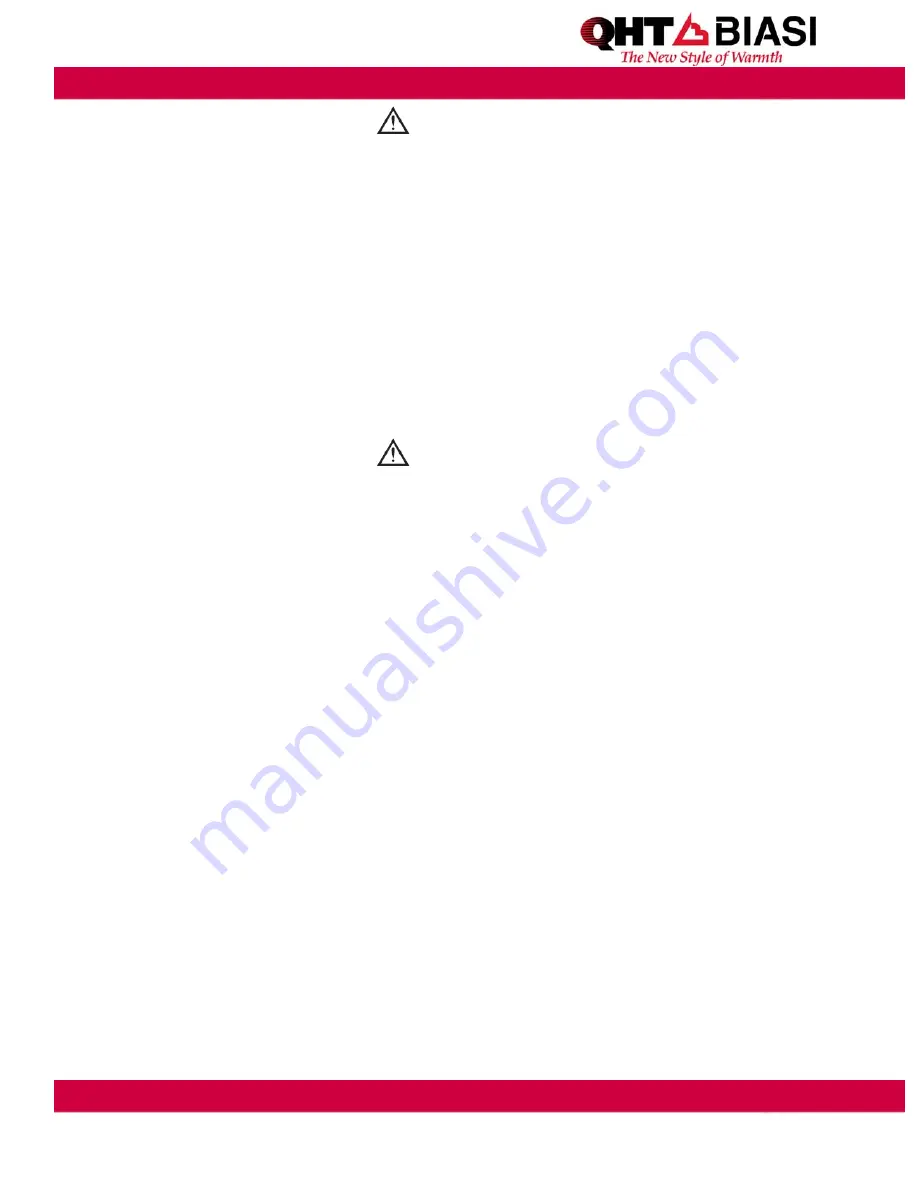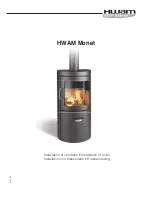
13
COAL FIRES CAN PRODUCE POISONOUS GASES!
All coal fires produce large quantities of carbon monoxide (CO) a highly poisonous gas. Exposure to this gas produces
drowsiness, sleep, and in some cases, brain damage or even death. Since carbon monoxide is odorless and colorless, the victim is
rarely aware that he or she is being overcome until it is too late.
Normally, carbon monoxide burns as a blue flame over the coal bed, but under any of the following conditions, unburnt
carbon monoxide gas could escape from the combustion chamber, stove pipe, flue or chimney and enter the house:
•
A blocked chimney
•
An internal blockage in the heating appliance that can be caused by a building up of ashes, poor positioning of the fuel, or firing
with too much fuel.
•
A closed smoke pipe damper
•
A poor chimney draft.
If you are burning coal or plan to burn coal, make certain that none of the conditions listed above exist. If you have any questions
about coal burning, starting or maintaining a coal fire please consult with your contractor.
BURN BITUMINOUS (SOFT) COAL ONLY
Your success with coal burning will improve with experience, as it takes time to familiarize yourself with your new boiler and various
fuels. Getting the maximum heat out of your coal generally depends on these factors:
•
Proper firing technique with adequate draft.
•
Clean heat exchanger surfaces in you boilers.
•
Quality Bituminous (soft) coal of the proper size.(1-1/2” -2-1/2” diameter coal).
It is best to build a coal fire by gradually adding coal over a well established bed of wood coals. Before adding fuel, check to see that
the ashes are removed from the lower door and that there is clear draft up through the grate area.
The type, quality and size of the coal you are using will affect the kindling rate and time required to establish a good, deep coal bed.
There are no set rules, but the following suggestions may help:
1. Don’t run too low a fire. Once you have a good hot coal bed, keep the firebox full to the level of the fire door. Bank the coal bed
sloping down to the sides and the front below the bottom of loading door. A good deep fire is more economical than a low, thin
one. DO NOT overload the combustion chamber.
2. Be sure to leave a “hot spot” (an area of exposed, glowing coals) to ignite the gases released from the fresh coal.
3. Be sure to clean out ashes from below grates before adding fuel. Be sure to remove and store ashes only in a metal container,
preferably with a cover like a trash can, some people even sift ashes to remove large unburned chunks of coal to be reburned.
Glowing embers in a bed of ashes can remain hot for many days– so be very careful of how you dispose of ash from both wood
and coal fires!
4. Don’t allow coal dust and soot to accumulate on the inside surfaces of your boiler. Coal dust has an even higher insulating value
than creosote, so it is a good habit to brush away any accumulation daily. Be careful to check the cleanout in the rear smoke
hood at least once a week.
5. Don’t disturb the fire once you have a good coal bed.
6. If you have trouble starting or maintaining a fire, you may want to mix fuels. Generally, softer coals kindle and burn better in
smaller fireboxes and start up better. Coal over wood coals and gradually establish a good coal fire with bituminous “chestnut”,
“stove”, or “egg” coal. You can also freely mix various wood types. A good way to clean any creosote buildup from a regular wood
fire is to occasionally burn 100-200 pounds of coal.)
SPECIAL PRECAUTIONS MUST BE TAKEN WHEN BURNING COAL TO AVOID DANGER DUE TO CARBON MONOXIDE GAS
POISONING.
DANGER
CAUTION
COAL FIRE














































